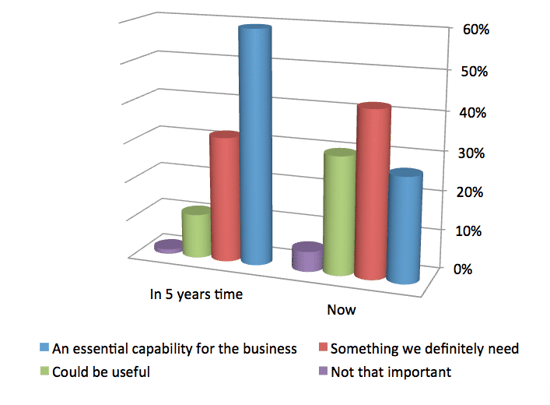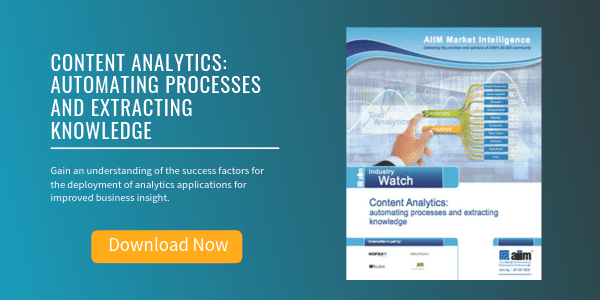
Content Analytics Explained – Uncovering This Essential Tool
You’ve heard about content analytics. You’ve been told that your organization needs it. You’ve been told that you need it. But chances are good no one has bothered to explain what it is and why we all should care.
Turning to the recent AIIM industry watch titled “Using Analytics - automating processes and extracting knowledge” for answers, essentially, content analytics is about pulling back the curtain obscuring our content assets, the condition of that content, and how it is used. It’s about using rules, mathematical, statistical, and semantical models to automate how content is captured, analyzed, and governed over its lifecycle. We do this in order to gain 360 degrees of insight into our unstructured data and derive business value.
This matters because without a way to measure and analyze content, how do you know it is working? How can you ensure your message is effective? How do you optimize, test for weaknesses, or make progress towards new solutions and predict future trends? When 80% of the content in the organization is reported to be unstructured, we need a way to automate how important content is identified, captured, analyzed, and governed—we do this with content analytics.
Information Chaos or Information Opportunity?
Content analytics is a key driver to turn information chaos into information opportunity. Right now, content analytics is fast becoming a business staple in a number of organizations (27%), and in the majority, a guiding star to lead future expansion within the next five years (59%). How much does content analytics currently matter in your organization?
Figure 1: How important would you say content analytics is for your organization?

The Possibilities are Endless—but Where to Begin?
Overall, content analytics shifts our business strategy for leveraging content assets from one that is primarily reactive to a strategy much more proactive. It also has the potential to be applied to nearly limitless use cases, processes, operations, and tasks—basically, wherever information is necessary, content analytics offers universal benefits. By 2020 content analytics is on course to become an essential tool in the enterprise, but where do we begin to reach this future state?
To gain greater understanding about the current and future outlook of content analytics, it may be worthwhile to assess your current state against a baseline, for instance, the AIIM Industry Watch Report titled “Using Analytics - automating processes and extracting knowledge” as well as learn about best practices, opinions, and recommendations when developing your own content analytics capability.
AIIM research finds that it is very possible to move an organization forward using analytics to extract knowledge and automate business processes and activities. It also shows that organizations are taking this very seriously with trailblazers proving the theories, additional organizations becoming citizens of the growing analytics community, and outlanders quickly realizing they are falling behind and could risk extinction. How does your organization measure up?



